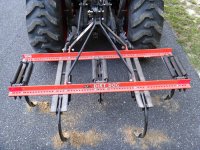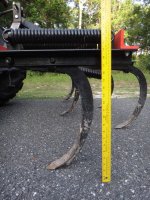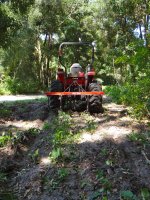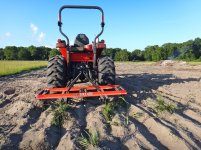ishiboo
Platinum Member
I'm going to be building my own cultipacker, using some wheels off an old Leslie I have that previously used wood bearings. I found 1.75" solid hot roll is very inexpensive, so that's what I am going to use.
I am a bit curious though why cultipackers have the wheels floating on the shaft, and then also have bearings on the shaft ends. It seems like they would turn on the shaft and wear both the packer wheels and shaft prematurely. The only thing I can think of is in operation they don't really turn on the shaft, but slide side-to-side and have the effect of helping to prevent clods/etc. from sticking between two packer wheels.
Any thoughts?
I am a bit curious though why cultipackers have the wheels floating on the shaft, and then also have bearings on the shaft ends. It seems like they would turn on the shaft and wear both the packer wheels and shaft prematurely. The only thing I can think of is in operation they don't really turn on the shaft, but slide side-to-side and have the effect of helping to prevent clods/etc. from sticking between two packer wheels.
Any thoughts?




